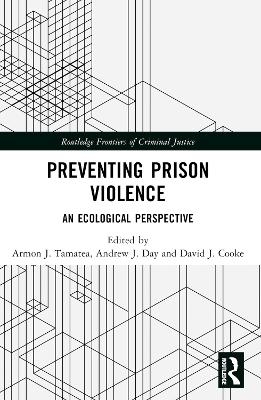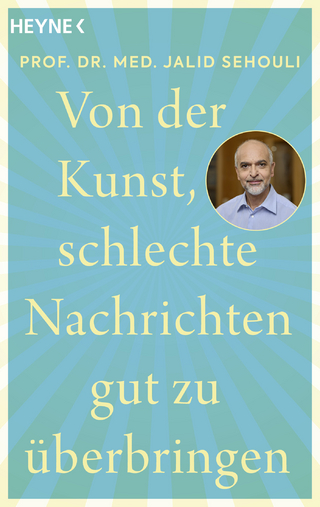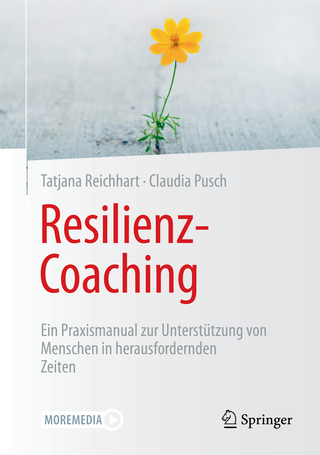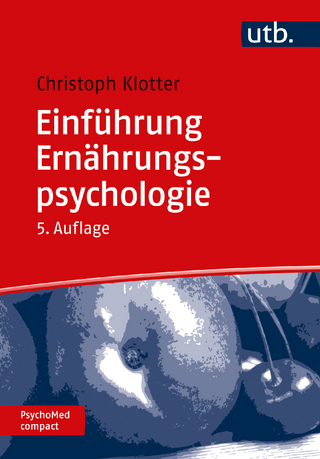
Preventing Prison Violence
Routledge (Verlag)
978-1-032-22406-0 (ISBN)
Interpersonal violence is a global concern and a significant cause of death around the world. In prisons, the human, financial, and health burden of violence presents a significant social issue – as well as a ‘wicked problem’ that does not permit of simplistic solutions. Recent innovations in data capture means that questions about violence, gang-affiliations, and prisons that could not be answered previously can now be explored. The central theme of this book is that prisons are ‘ecologies’ – spaces where people, resources, and the built environment are interrelated – and that violence is a product of a complex of interpersonal and environmental factors that increase the likelihood of assault – but also provide opportunities for solutions. Drawing on psychology, geography, indigenous knowledge, gang culture, and predictive modelling, this book expands beyond the conventional individual-focused ‘assessment-intervention-prevention’ approach to research in this field, towards a holistic and ecological way of thinking that recognises individual, organisational, and cultural factors, as well as the role of the physical environment itself in the facilitation and prohibition of aggression.
Providing a comprehensive resource for those who are interested in making prisons safer; firmly based in contemporary research and theory, Preventing Prison Violence will be of great interest to students and scholars of Penology, Violence and Forensic Psychology, as well as to professionals working in criminal justice settings.
Armon J. Tamatea (Rongowhakāta; Te Aitanga-a-Māhaki), PhD., PGDipPsych(Clin) is a clinical psychologist who served as a clinician and senior research advisor for Ara Poutama Aotearoa/Department of Corrections (New Zealand) before being appointed senior lecturer in psychology at the University of Waikato, Hamilton, New Zealand. He has worked extensively in the assessment and treatment of violent and sexual offenders and contributed to the design and implementation of an experimental prison-based violence prevention programme for high-risk offenders diagnosed with psychopathy. His research interests include institutional violence, psychopathy, New Zealand gang communities, and exploring culturally informed approaches to offender management. Armon currently divides his professional time between research, teaching, supervision, and clinical practice in the criminal justice arena. Andrew J. Day is an enterprise professor in the School of Social and Political Sciences, University of Melbourne, Australia. His interests are in criminological psychology, especially the development of interventions to improve wellbeing and reduce risk. David J. Cooke is a chartered forensic and chartered clinical psychologist in Australian Catholic University. He has long-standing research and clinical interests in violence risk; including the risks created by the ecologies of institutions. He is a co-author of PRISM and has carried out PRISM evaluations in institutions in many countries.
Introduction: Steps to an Ecology of Prisons
PART ONE: KEY KNOWLEDGE
Chapter 1: Understanding Prison Violence: An Ecological Perspective
Chapter 2: Prison Violence: Definition and Measurement
Chapter 3: Toward a Gendered Ecological Approach for Understanding Prison Violence
Chapter 4: Elucidating the Ecology of Prisons: A look through the PRISM
Chapter 5: Preventing Prison Violence
PART TWO: VIOLENCE IN CONTEXT
Chapter 6: New Zealand Prison Violence: History, Prevalence and Organisational Responses
Chapter 7: What Do People in Prison Think about Violence?
Chapter 8: Correctional Staff: Roles and Experiences
PART THREE: CRITICAL ISSUES
Chapter 9 Critical issue 1: Colonialism, Settler Colonialism, and Supporting Indigenous as Violent
Chapter 10: Critical issue 2: Gangs
Chapter 11 Critical Issue 3: Prison Social Climates
Chapter 12: Critical Issue 4: The Prison Environment
PART FOUR: POSSIBILITIES AND SOLUTIONS
Chapter 13: An Approach to Preventing Prison Violence
Chapter 14: Exploring the Wicked Problem of Violence in Prison: Capturing the Complexity of Contexts
Chapter 15: Violence in Prisons: What Have We Learned So Far?
| Erscheinungsdatum | 11.07.2023 |
|---|---|
| Reihe/Serie | Routledge Frontiers of Criminal Justice |
| Zusatzinfo | 15 Tables, black and white; 1 Line drawings, black and white; 1 Halftones, black and white; 2 Illustrations, black and white |
| Verlagsort | London |
| Sprache | englisch |
| Maße | 156 x 234 mm |
| Gewicht | 462 g |
| Themenwelt | Geisteswissenschaften ► Psychologie ► Sozialpsychologie |
| Naturwissenschaften ► Biologie ► Ökologie / Naturschutz | |
| Recht / Steuern ► Strafrecht ► Kriminologie | |
| ISBN-10 | 1-032-22406-1 / 1032224061 |
| ISBN-13 | 978-1-032-22406-0 / 9781032224060 |
| Zustand | Neuware |
| Informationen gemäß Produktsicherheitsverordnung (GPSR) | |
| Haben Sie eine Frage zum Produkt? |
aus dem Bereich


